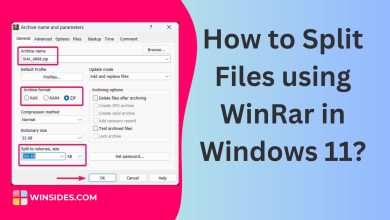Run System Information as Administrator on Windows 11: 5+ Easy Ways!
Get Real-time and Accurate System Information using msinfo32 as Administrator
System Information is a built-in tool in Windows 11 that provides detailed information about your computer’s hardware, software, and system resources. This is an essential tool for troubleshooting, diagnosing issues, and gathering data about your system’s configuration. For some cases, you may need to run System Information with administrative privileges to access advanced system details that require elevated permissions. Running it as an administrator ensures you can view and manage all necessary information without restrictions and so In this tutorial, I’ll guide you to run system information as administrator with elevated rights on your windows 11 pc.
Read This: Run Firefox As Administrator On Windows 11? 5+ Best Ways!
Why to Run System Information with Administrative Privileges on Windows 11?
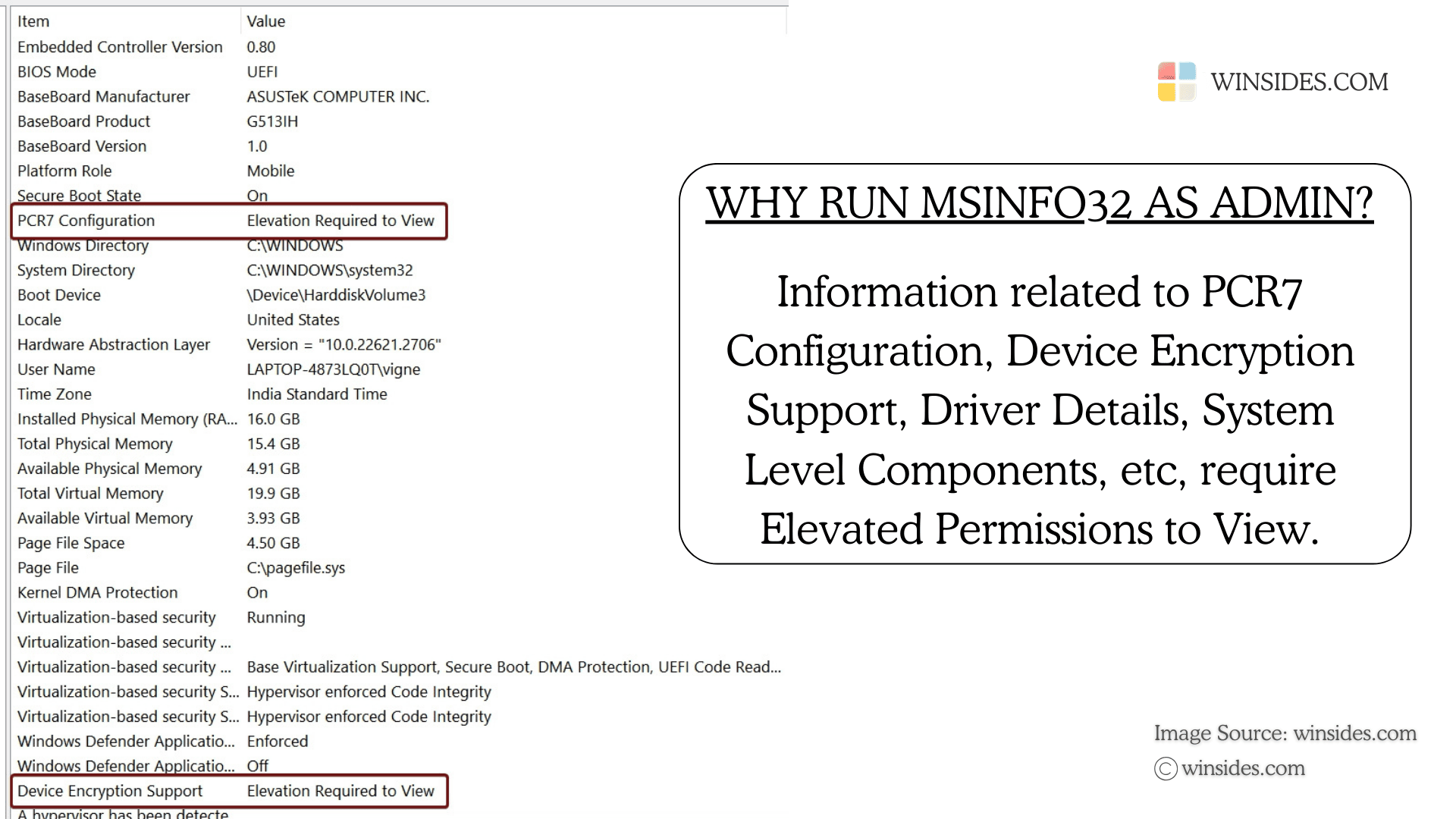
The key reason to run System Information (msinfo32) as an administrator is to ensure real-time and accurate data, especially for system resources like drivers, PCR7 Configuration, Device Encryption Support, and other system-level components. This is important for avoiding discrepancies that could mislead troubleshooting or system monitoring tasks.
Different Methods to Open and Run System Information as Admin on Windows 11 OS
- Open System Information as Administrator using the Start menu.
- Use the Run Command and open System Information with Administrative Privileges.
- Create a New Task to run System Information with Administrative Privileges using the Task Manager.
- Always Open System Information with Elevated Permissions by creating a Dedicated Desktop Shortcut.
- How to Open System Information as Admin using the File Explorer.
- Open Command Prompt or Windows PowerShell as Administrator and then open msinfo32.
IMPORTANT: Running applications as an administrator grants elevated privileges that can significantly affect your system. Please use caution when doing so, as it can lead to Unintended System Modifications, Security Vulnerabilities, Accidental Data Loss, Unauthorized Access, Irreversible Changes, etc.
How to Run System Information as Administrator using the Start menu on Windows 11?
- Go to the Start menu. You can also use the keyboard shortcut WinKey + S. Search for System Information.
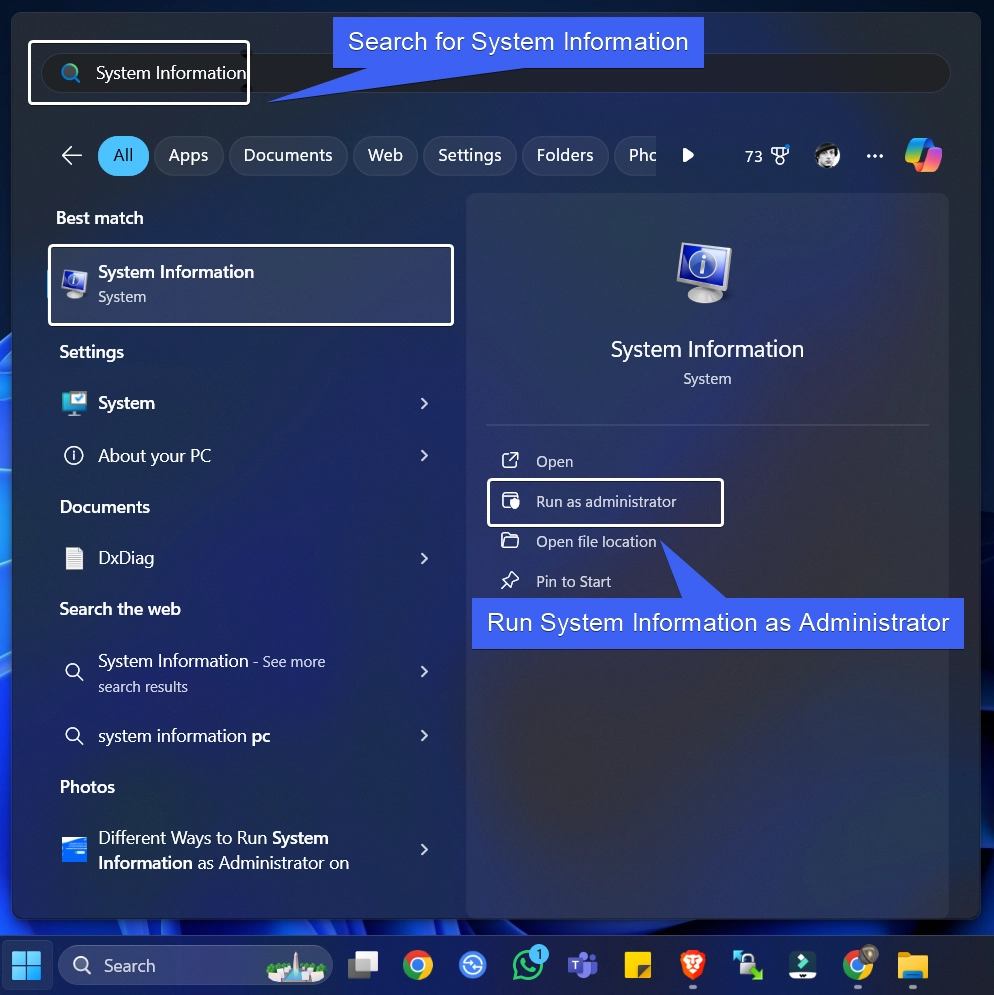
- Once you find the app, right-click on the app and click Run as Administrator.
- The User Account Control will prompt for confirmation and open System Information as Administrator.
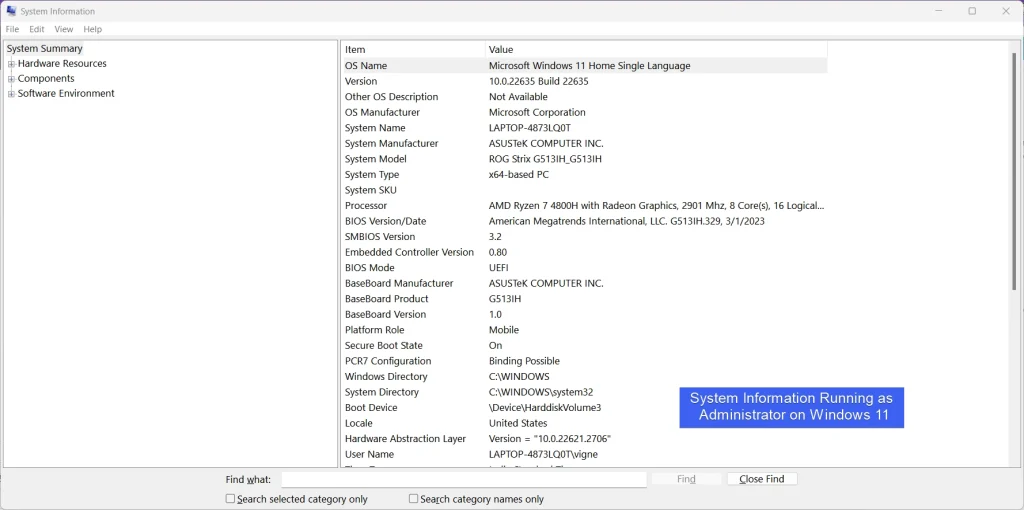
Use Run Command and open System Information with Administrative Privileges
- Go to the Run Command. The easy way to access the Run Command is to use the Keyboard Shortcut, WinKey + R.
- Type the command
msinfo32and press CTRL + SHIFT + ENTER. This will prompt the system to execute the command with Administrative Privileges.
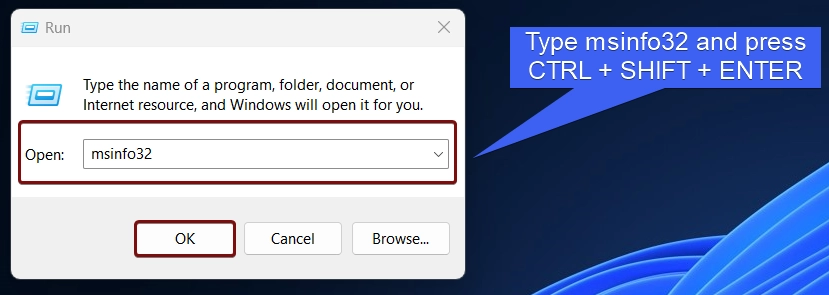
- The system will confirm and open msinfo32 with Administrative Privileges.
Run New Task to open msinfo32 with Administrative Privileges using the Task Manager
- Right-click on the Taskbar and click Task Manager. You can also use the shortcut CTRL + SHIFT + ESC. This combination will open Task Manager directly.
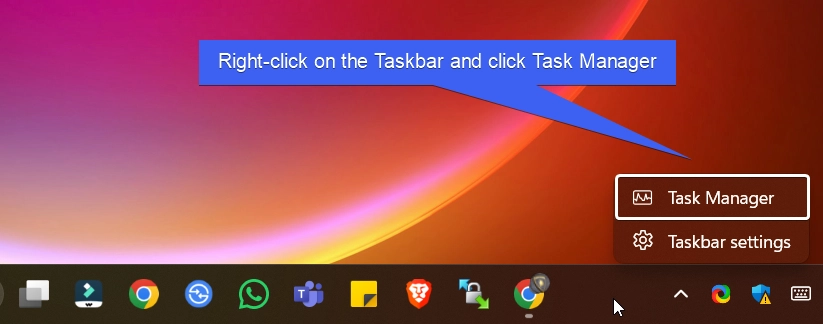
- In the Task Manager, under Processes, click on Run New Task. Create New Task dialog will pop up now.
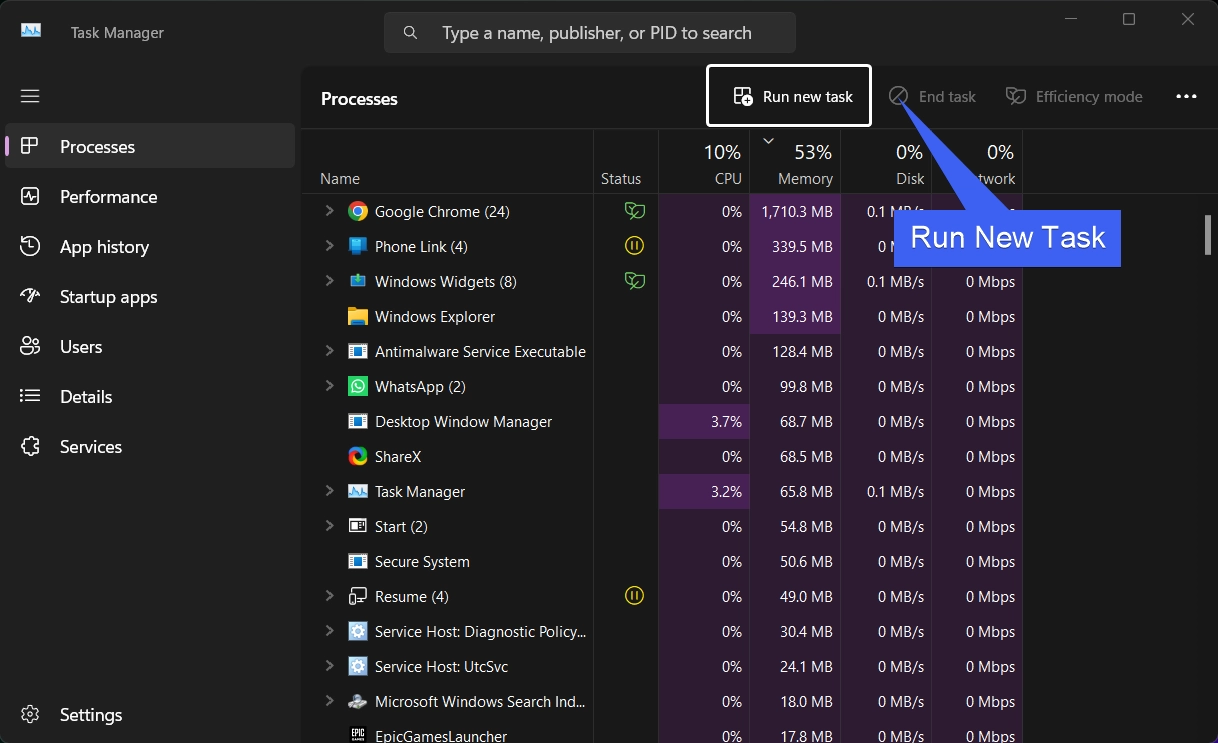
- Type the command
msinfo32and enable the checkbox “Create this Task with Administrative Privileges“. Finally, click OK.
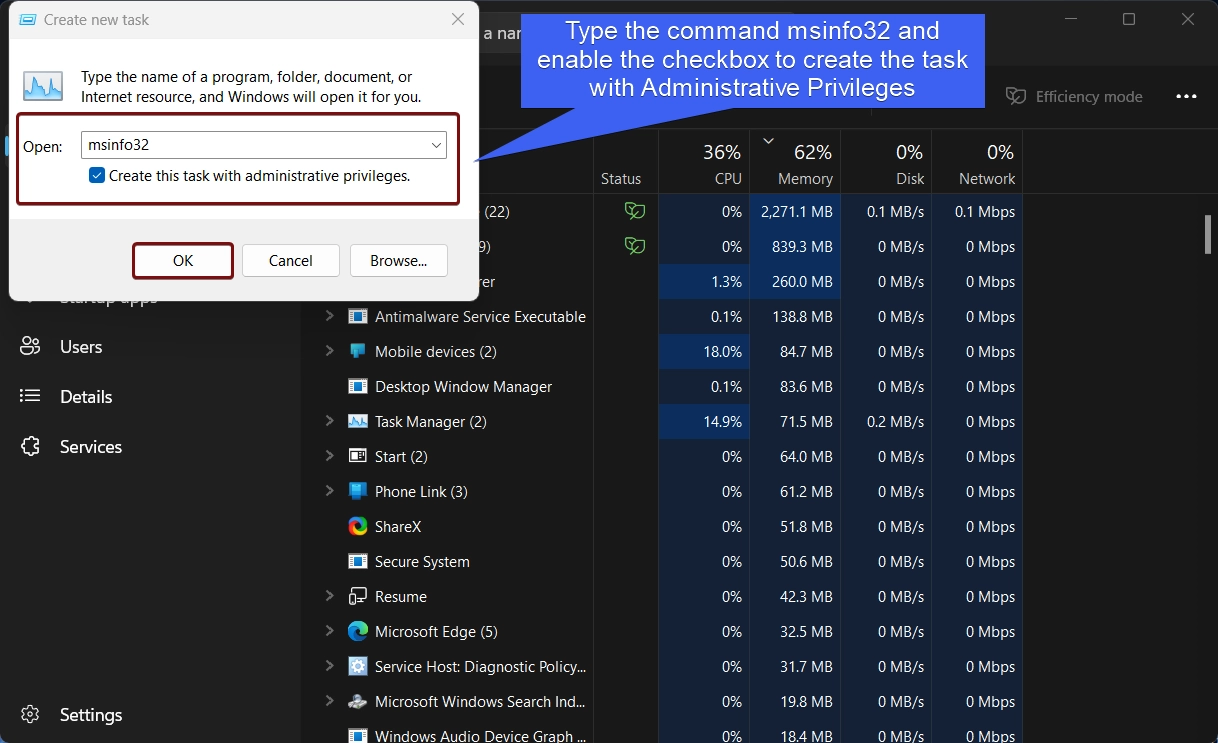
Create a Desktop Shortcut and Always Open System Information as Administrator on Windows 11
- Right-click on the Empty space of the Desktop, and click New > Shortcut.
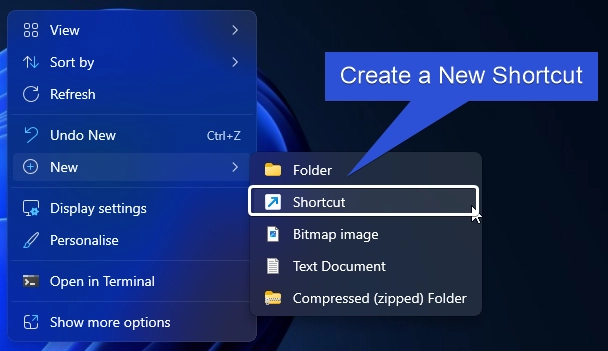
- The Create Shortcut dialog box will open now. In “Type the Location of the Item“, enter the command
C:\WINDOWS\system32\msinfo32.exeand click Next.
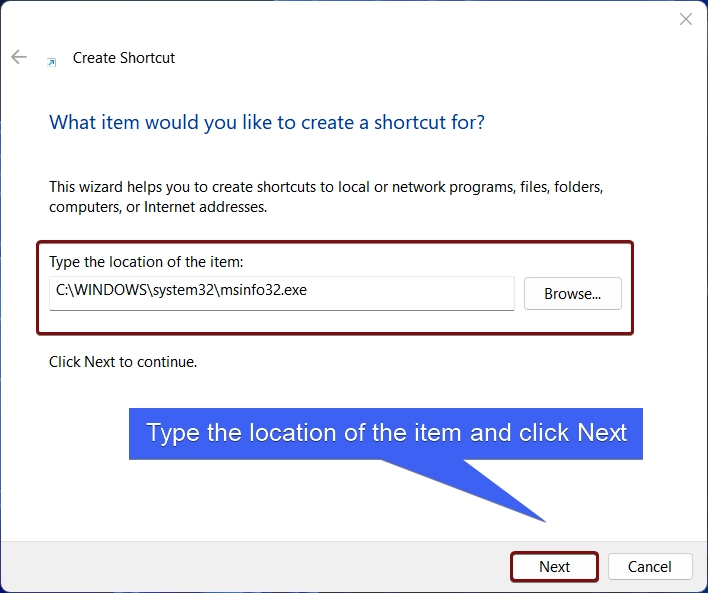
- The system will assign the shortcut name
msinfo32. Kindly change it to System Information. Finally, click Finish.
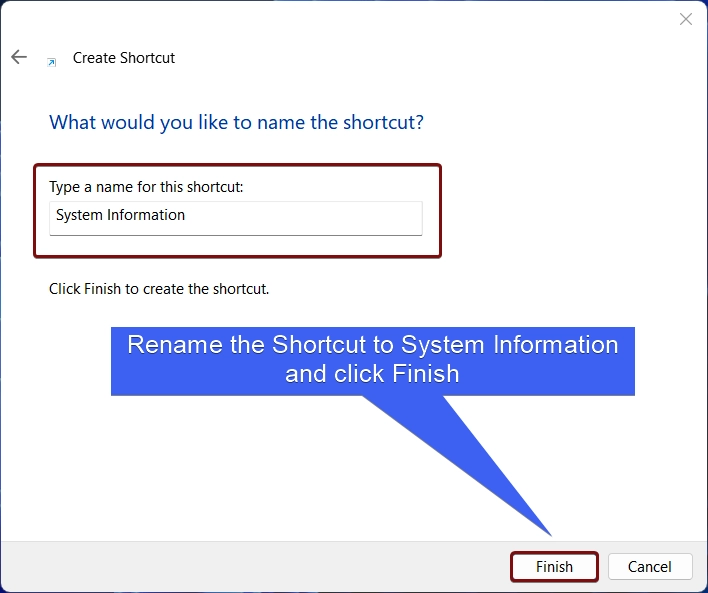
- System Information Desktop Shortcut will be created.

- Right-click on the Shortcut and click on Properties.
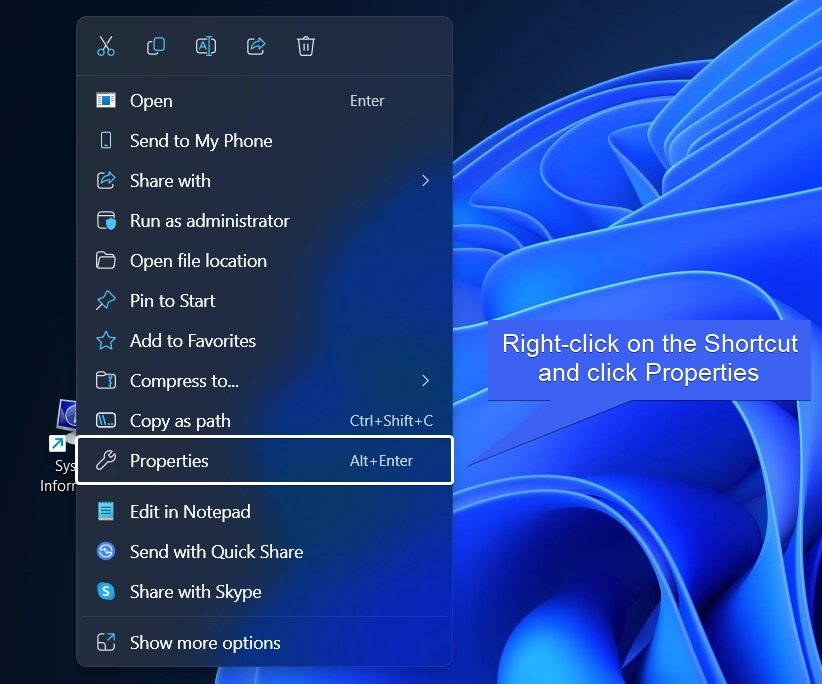
- System Information Properties will open now. Click Advanced.
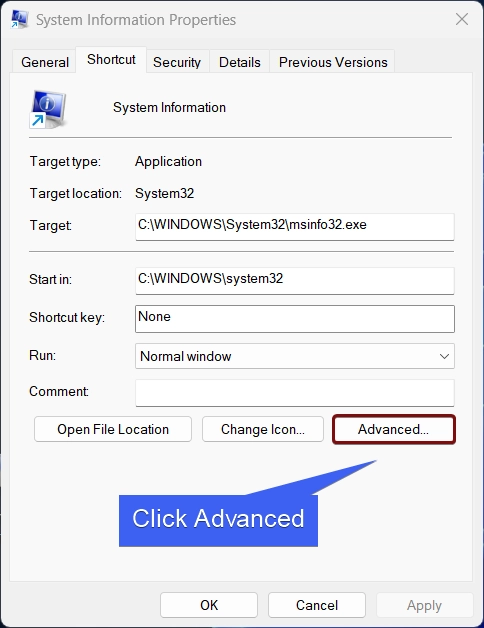
- In Advanced Properties, make sure to enable the checkbox “Run as Administrator“. Finally, click OK, and then Apply.
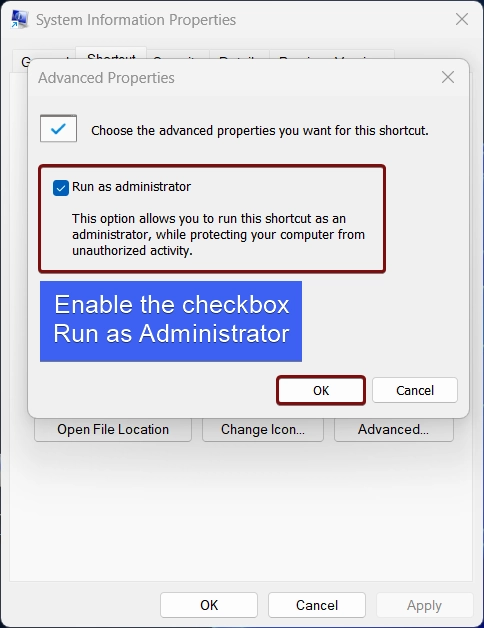
- This option allows you to run this shortcut as an administrator, while protecting your computer from unathorized activity.
- That’s it. Everytime you open System Information via this shortcut, the User Account Control will prompt for your confirmation and open it with Elevated Privileges.
Open System Information with Elevated Permissions using the File Explorer
- Open File Explorer using the Shortcut WinKey + E.
- In the File Explorer, enter the following path to access the System 32 Folder.
C:\WINDOWS\system32

- Once in the System32 Folder, go to the search bar and search for msinfo32.

- Locate msinfo32, and right-click on the file and click “Run as Administrator“.
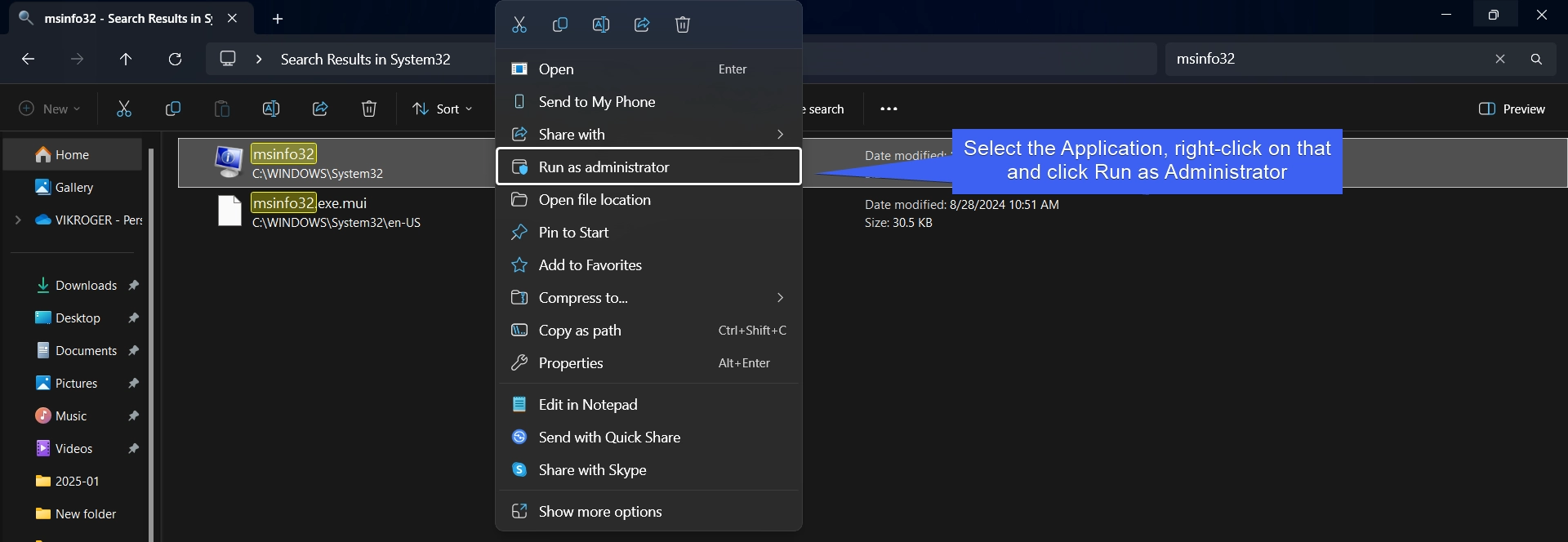
Open Command Prompt or Windows PowerShell with Administrative Privileges and run Msinfo32
For explanation, we will use Windows PowerShell.
- Open Run Command using the shortcut WinKey + R.
- Type
powershell(For Command Prompt, use the commandcmd), and press CTRL + SHIFT + ENTER.
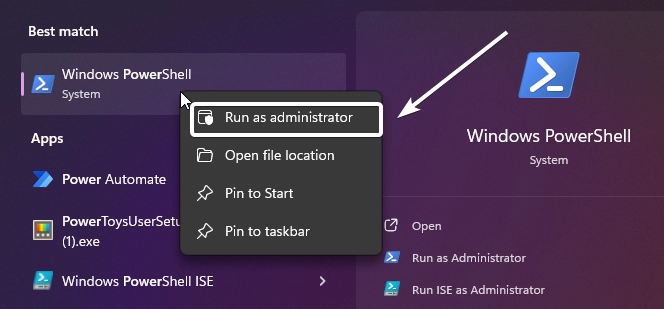
- This will prompt the system to execute this command with Administrative Privileges. In the PowerShell, execute the following command.
msinfo32

Always be Cautious while Running an Application as Administrator on Windows 11
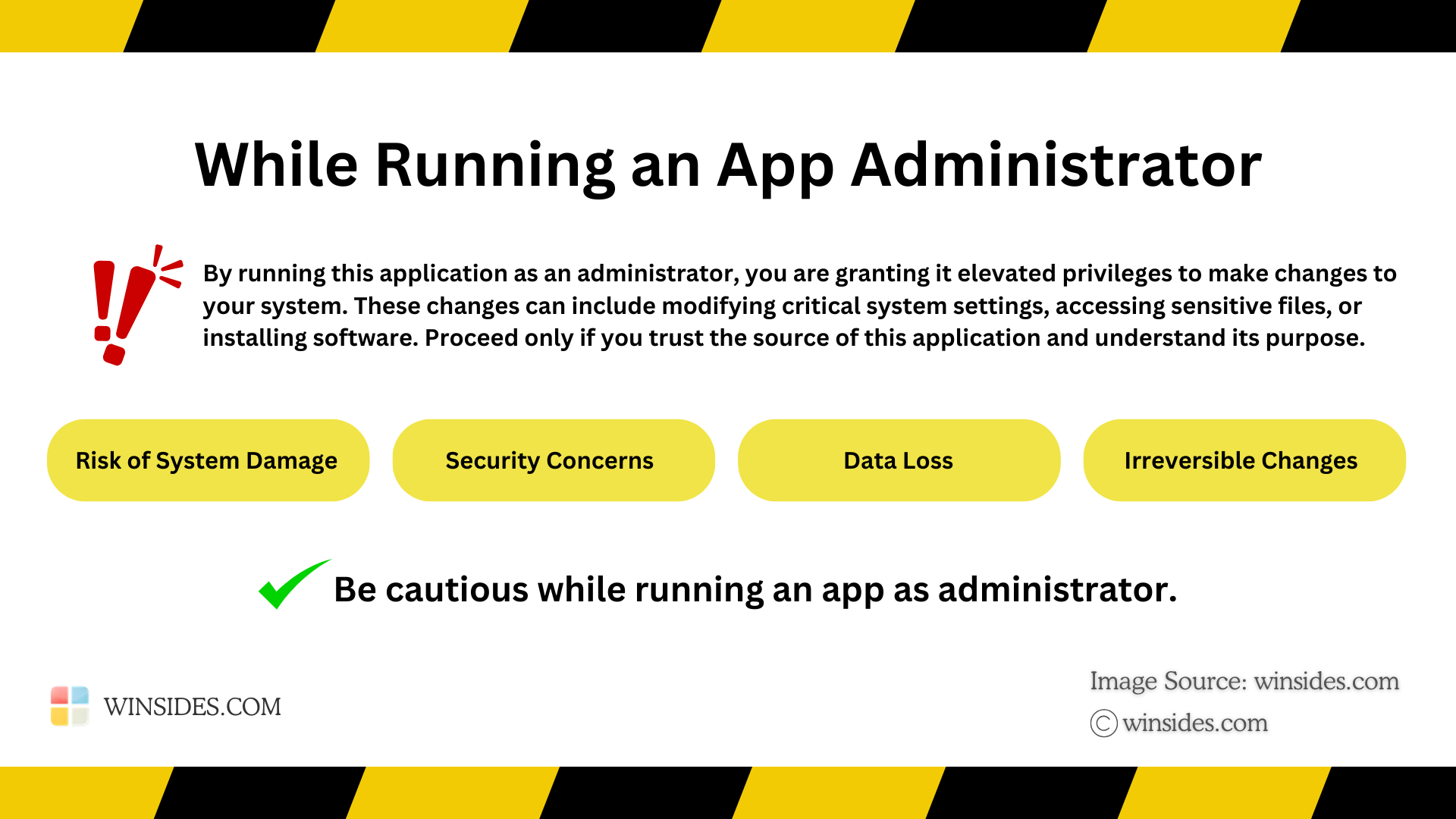
System Information as Administrator on Windows 11 grants it elevated privileges, which can potentially bypass system security restrictions. Please proceed with care and only run trusted applications in this mode. At Winsides.com, we advise our users to use Administrator privileges only when absolutely necessary to perform tasks requiring elevated rights. Misuse of administrative privileges may lead to System Vulnerabilities, Data Loss, System Instability, Security Concerns, Irreversible Changes, etc.
Check Out: Run Google Chrome As Administrator On Windows 11! {6+} Best Ways
Have Queries?
If you have any queries, or if you find difficulty following the above steps, kindly let us know in the Comment Section. For more interesting articles, stay tuned to Winsides.com. Happy Computing! Peace out!
Related Articles:
- How to Check PC Specs without Logging into Windows 11?
- Microsoft’s Majorana 1 Chip – The Future of Quantum Computing?
- How to Change Font Size on Windows 11?
We combine expert insights with user-friendly guidance. We thoroughly research and test everything to give you reliable and simple to understand tech guides. Please take a look at our publishing process to understand why you can trust Winsides.

